March 24, 2019
We’ve done a bit of bread and pastry throughout the course but for a week starting on March 11th that was our (nearly) exclusive focus. We also had four additional students join us. Annie, a pastry chef from the Philippines who was at the Italian Culinary Institute for Gelato Week, also stayed for Pastry Week. Three Air Force personnel came for Pastry Week. Each was a personal assistant, working for one, high-ranking Air Force officer.
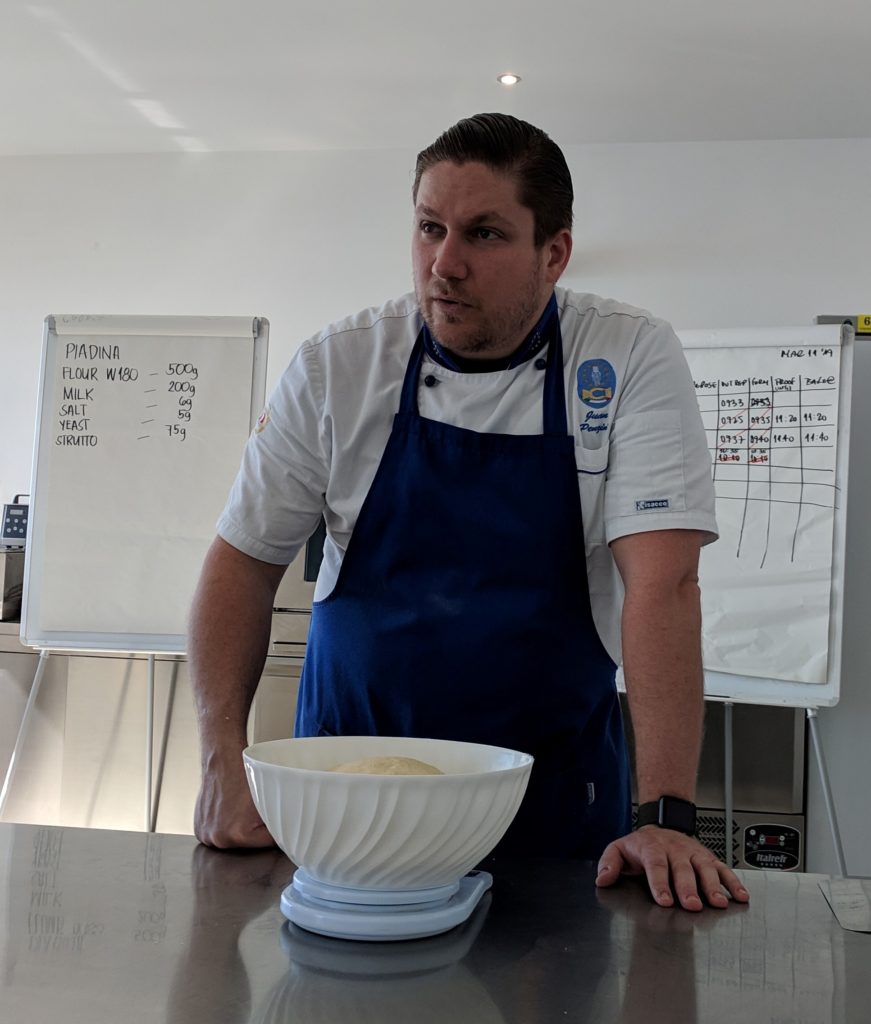
The personal assistants do all the tasks of an executive assistant, like maintaining schedules and organizing their bosses’ activities, but they also maintain his/her uniforms (and business suits if he/she is required to wear civilian business attire as part of his/her Air Force duties); keep all areas of their bosses’ house that could be seen by guests in perfect shape; cook meals; and plan, execute, and serve dinner parties. They were a nice addition to our group. Their dedication and precision were awe-inspiring.
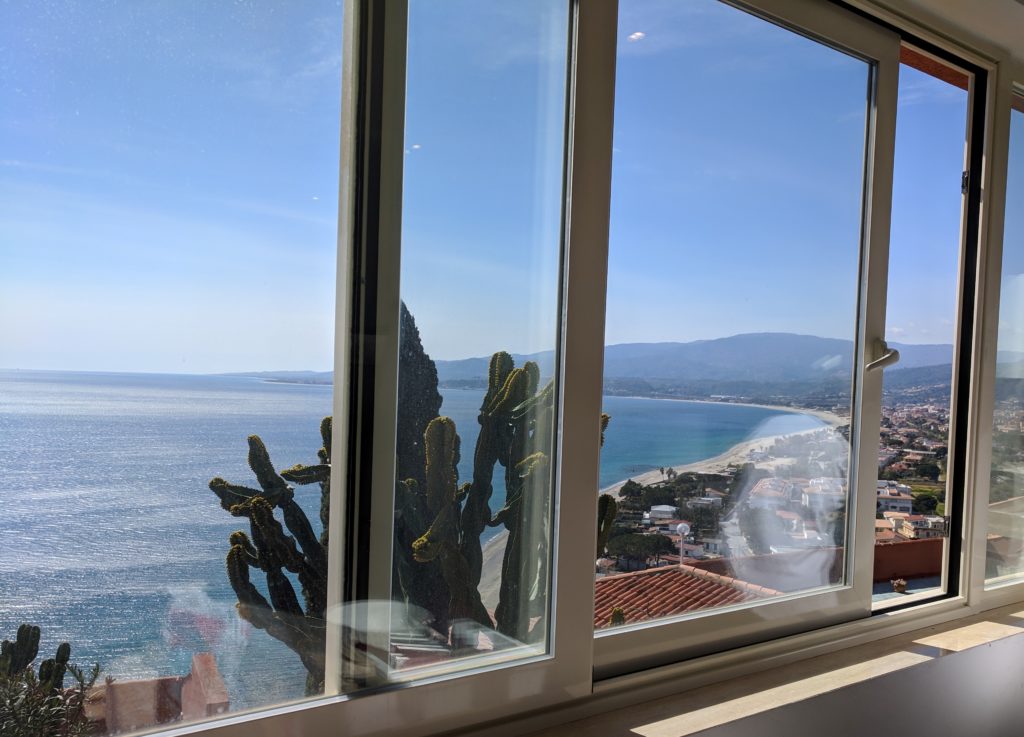
They were always the first to volunteer to try out ANYTHING and they were meticulous to the point of near perfection—even with tasks they had never attempted before (like laminating puff pastry and rolling it into a perfect rectangle!).
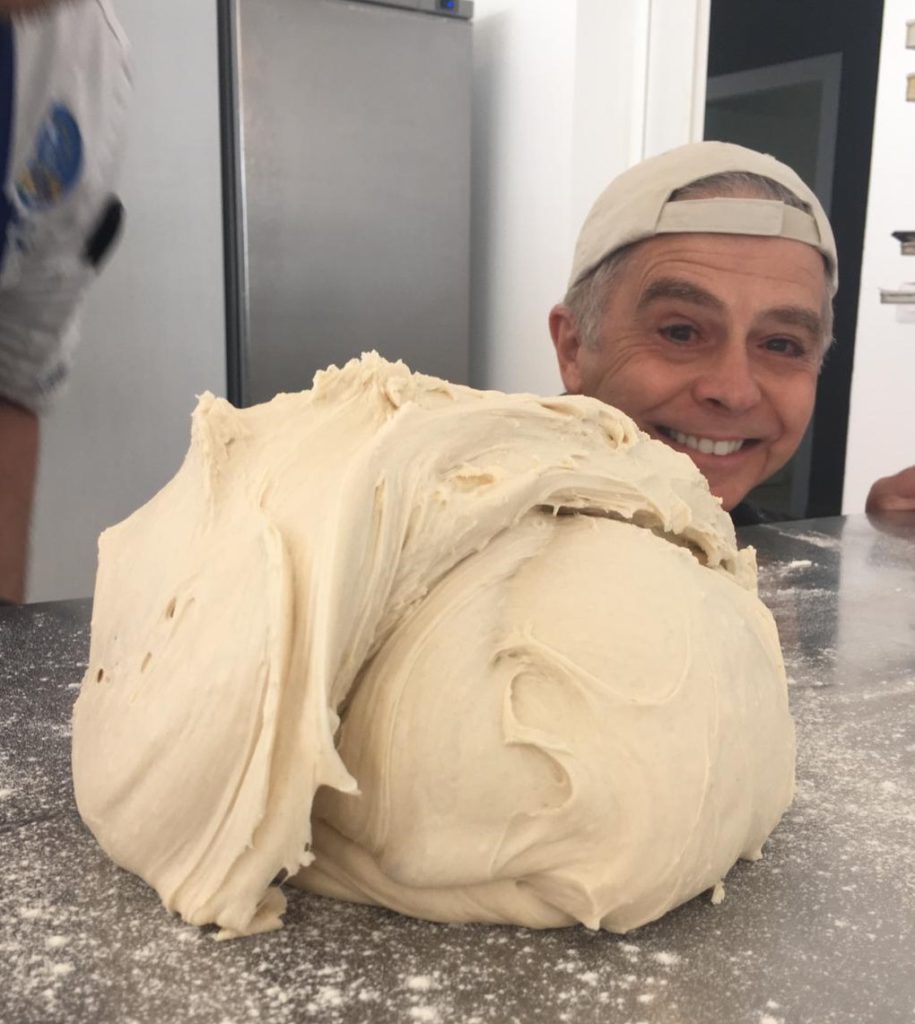
Apparently, when they go through culinary training in the Air Force, the accuracy of their dice is tested by passing diced vegetables through screens of various sizes to confirm that they are able to consistently create perfect diced vegetables. They were all really excited about incorporating Italian techniques and foods into their cooking.
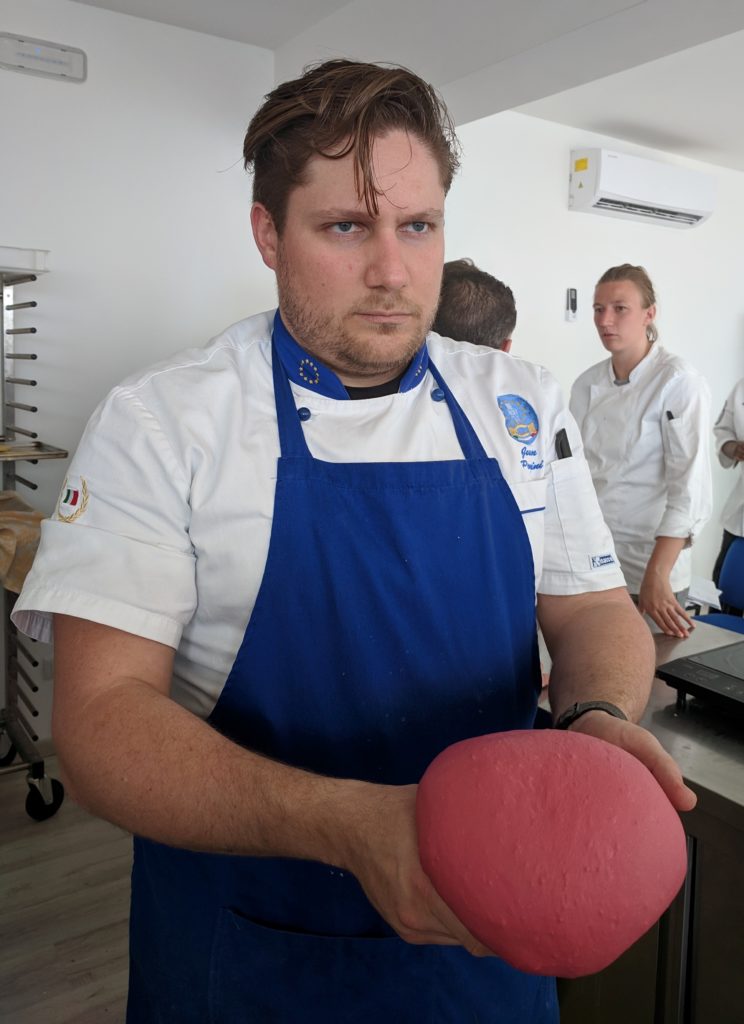
We had a crazy day of demonstrations and hands-on work on the 11th, including:
- Pane Carasau, a crispy flat bread from Sardinia that I love and now know how to make
- “Italian” Muffins (Chef John’s take on “English” Muffins—not Italian at all but fun to make nonetheless—and in a strange way not too dissimilar from Tuscan testarolli, of which there are several versions.)
- Piadina, a flat bread (which we never finished because Chef Juan didn’t like the way the dough turned out)
- Rosette (Roman bread rolls incised with a “rose” design on top)
- Hot Dog and Hamburger buns (obviously also not Italian)
- Mantovane
- Pane Arabo
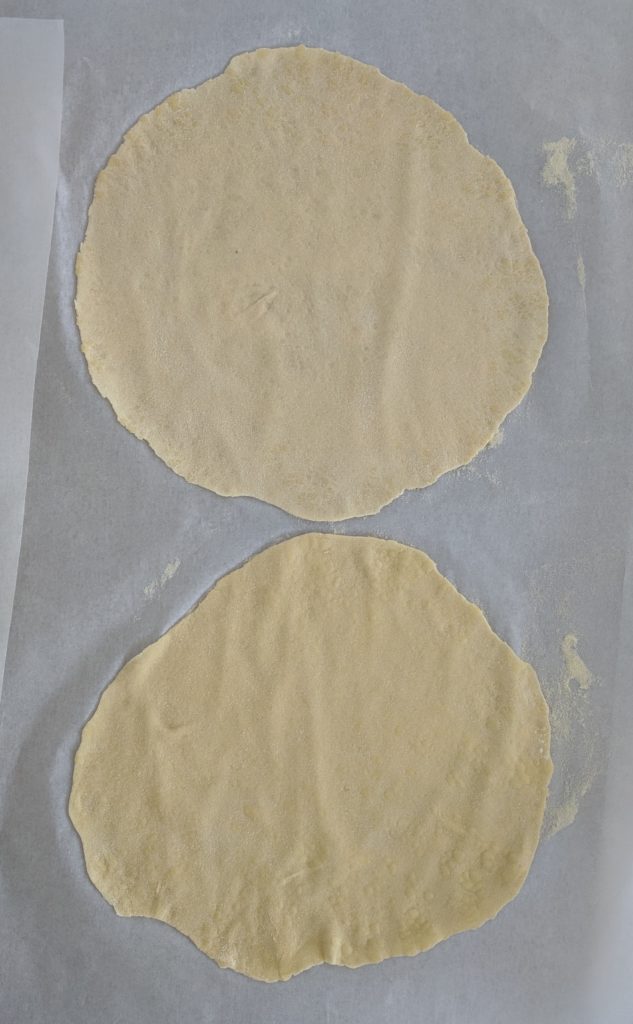
Chef John also demonstrated, and then we ate for lunch, a Piemontese pasta called Tajarin (dialect for tagliolini) made with an absurd amount of egg yolk. It’s something like 40 egg yolks for 2.2 pounds of flour. (It makes you wonder what all the whites were being used for. I vaguely remember from early in the course that the whites were used, a long time ago, for clarifying wine.) He also made Candereli, potato dumplings from Alto Adige that are basically the dough for a potato gnocchi stuffed with a meat filling.
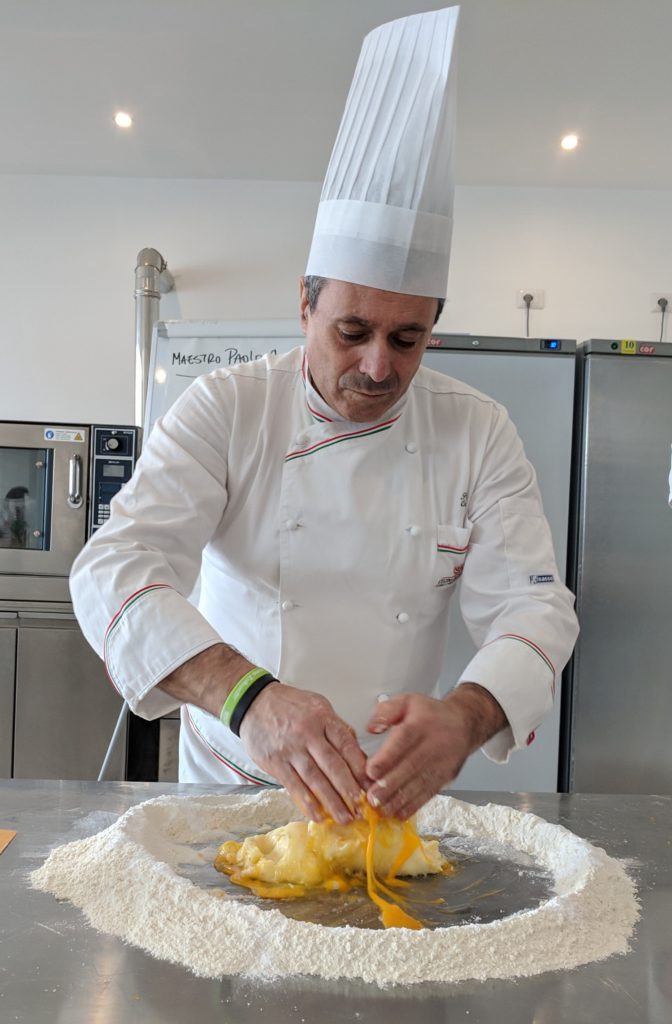
Maestro Paolo Caridi (Facebook and Instagram), one of Italy’s top Pastry Chefs, joined us for two absolutely amazing days demonstrating how to make an amazing array of Italian pastries, sweet breads and confections, some pan-Italian and some local Calabrese treats.
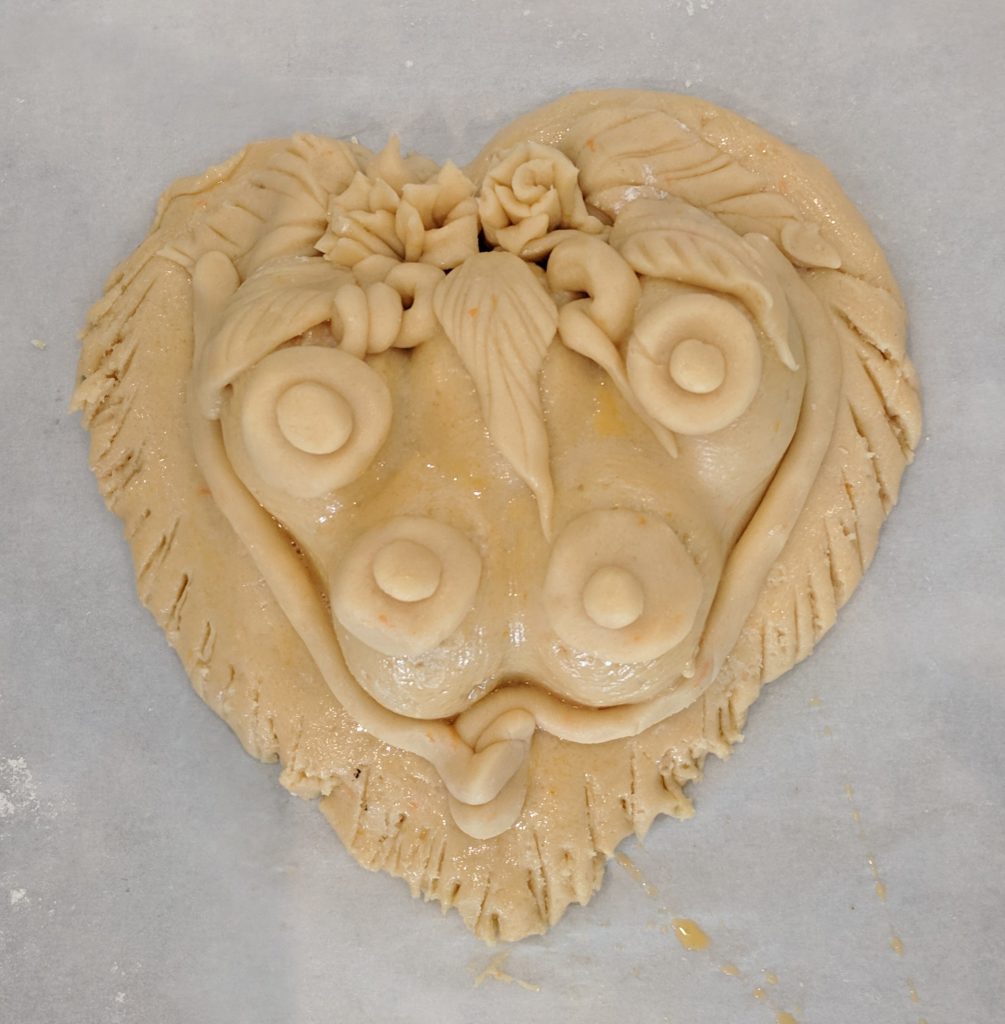
I was pleased to discover that my cannoli recipe was very similar to his (smile) though he has the advantage of being able to fill his cannoli with sweetened sheep’s milk ricotta which is unavailable in Santa Fe. I’ve even tried to buy sheep’s milk in Santa Fe to make my own ricotta but can’t find a source.
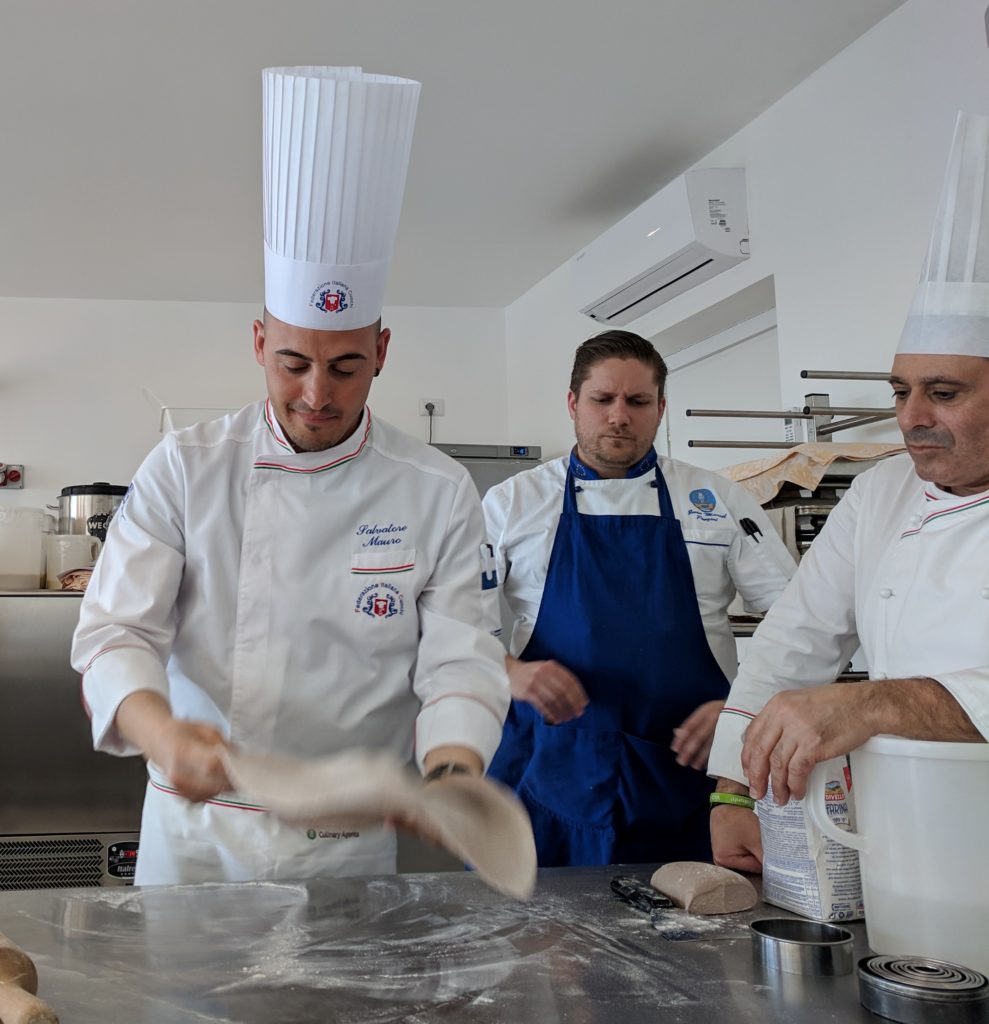
He made egg-shaped confections (Uovo Sodo Goloso) consisting of a “yolk” of marzipan surrounded by a “white” of white chocolate and pistachio paste. Using almond paste would have produced a more appropriate color for the “white” but he likes pistachios and they are a typical Calabrian product. They also add an amazing flavor contrast to the marzipan center. It was topped with melted white chocolate. He made these treats by emptying out egg shells and filling them with the various mixtures.
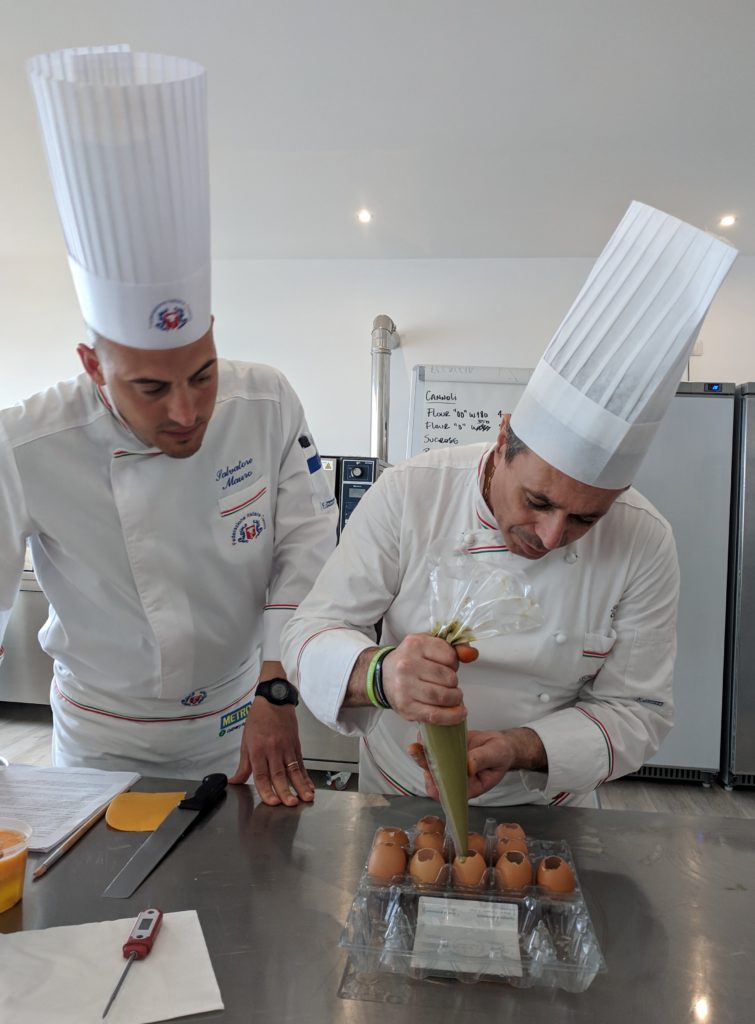
Colomba was, perhaps, the highlight of the two days. Essentially (this is an approximation but not far off) it is Panettone baked in the shape of a dove. Panettone is a very rich sweet bread with candied fruits and/or raisins that is traditionally served at Christmas. Colomba is the Easter equivalent. This was a two-day project (mostly due to the multiple rises of the dough) that I feel I could execute where it not for the fact that I don’t have Lievito Madre (Mother Yeast).
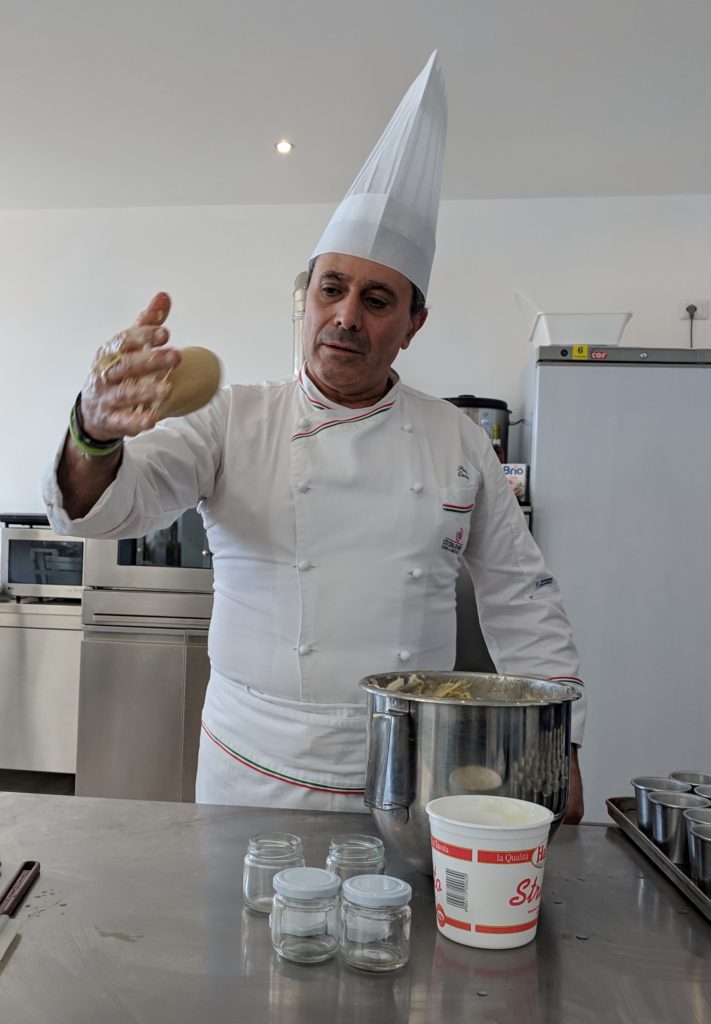
Mother Yeast is a pre-ferment made with natural yeast. It is similar to sourdough starter except that the final product isn’t sour. Other types of pre-ferment are made with commercial yeast. If all goes well, it takes about a month to make a respectable Mother Yeast. Maestro Caridi demonstrated how to create and maintain one. He has been keeping his going for 25 years with DAILY—yep, daily not weekly—feedings. Try that without a staff of workers! You’d have to take it on vacation with you. Explain THAT to TSA!

Apparently, there is no substitute for Lievito Madre in this particular product and it’s not allowed to be called Colomba if commercial yeast is used. Nonetheless, I am going to totally hack this recipe and use commercial yeast for my first go-round. I’m going to do this mostly because ratios of eggs and butter to flour are exceedingly high. It’s possible that the whole dough might just separate. I don’t want to have spent a month cultivating Lievito Madre only to have the bread dough turn into a disaster.
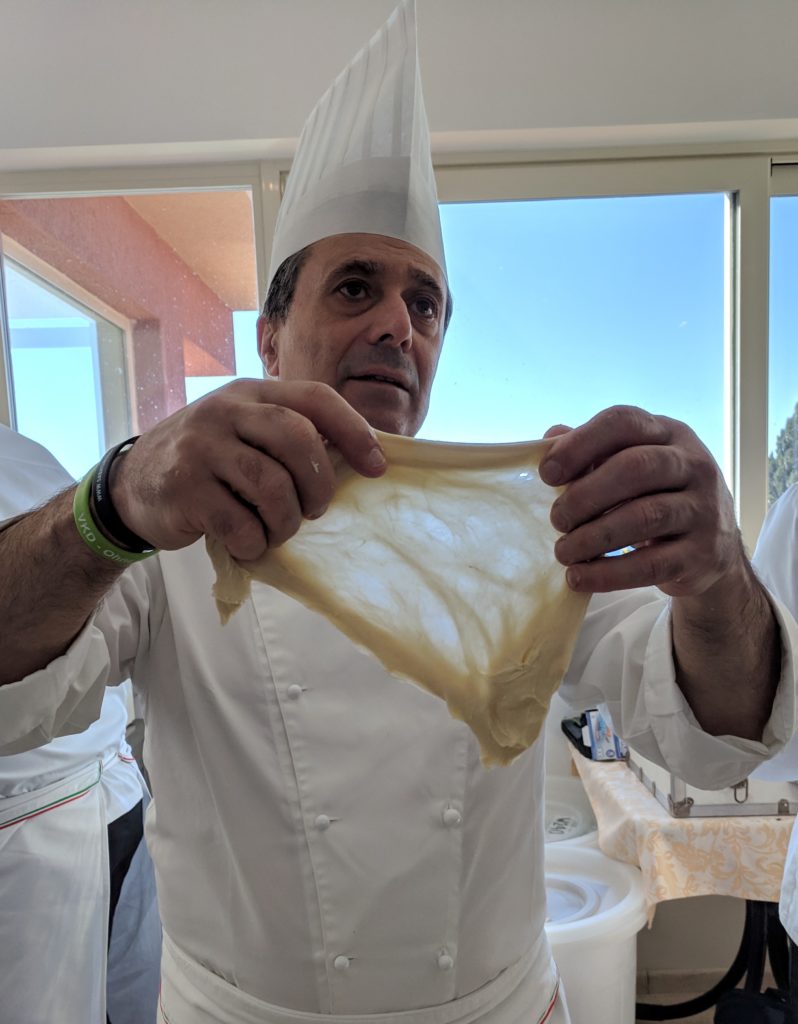
If the colomba, and by association panettone and pandoro (which is like panettone but without dried or candied fruit) work out, it might be what finally compels me to maintain my own natural yeast starter.
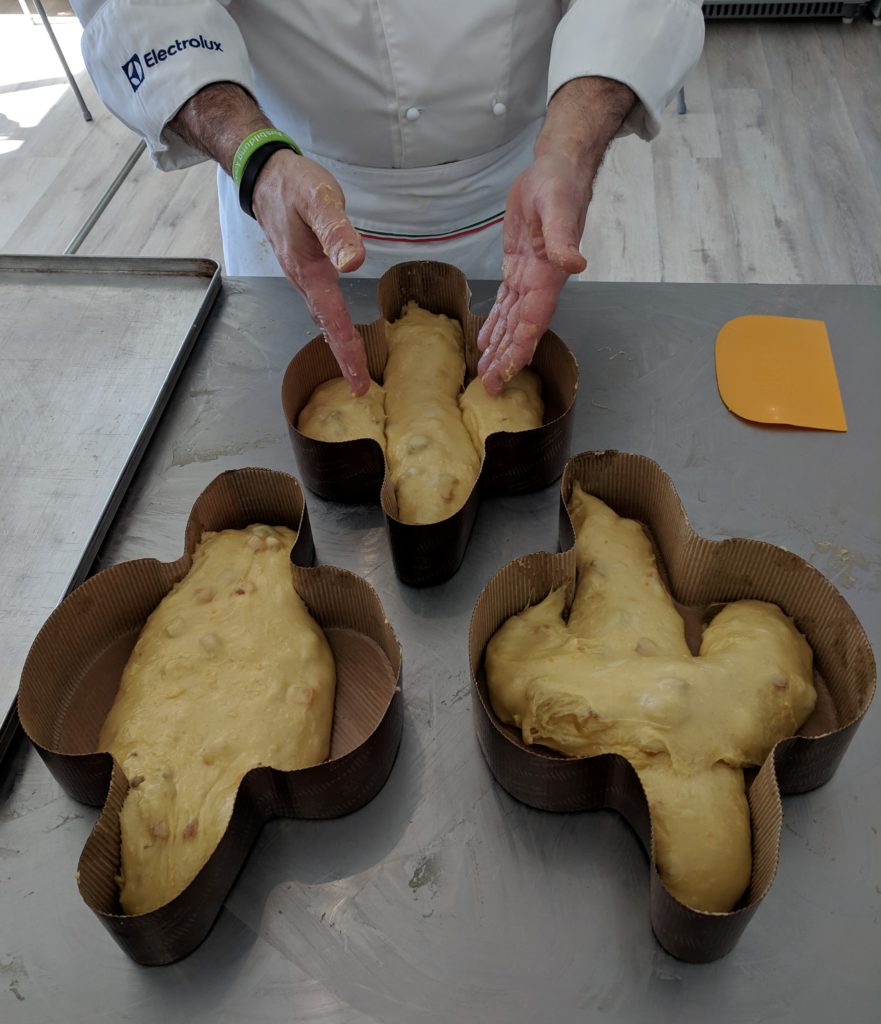
In addition, Maestro Caridi demonstrated the following:
- I Cudduraci, a sweet short crust pastry filled with shell-on hardboiled eggs, covered with another layer of crust, and lavishly decorated. Apparently, this is a traditional Calabrese pastry that a woman makes for her fiancé. The size of the pastry and number of eggs is supposed to correlate with the degree of “amore!”
- La pitta ‘mpigliata, a traditional Calabrian sweetbread stuffed with candied fruits and spices. It is very rich. Traditionally it is given by a man to his fiancé. You guessed it, the larger it is…
- Agnello al forno, an almond short crust pastry in the shape of a lamb filled with candied fruits and nuts.
- Agnello di marzapane, a lamb made out of marzipan. This is Italy, near Easter, after all, hence all the lamb shapes and Easter breads.
- Babà, small yeast-risen breads soaked in rum syrup.
- Bocconotto, small filled pastries. In this case, Masetro Caridi used a cream filling.
- Fraguni, open-faced pastries filled with ricotta and salame that were originally carried as lunch for workers in Calabria.
- Croccante, basically almond brittle
- Torrone, Similar to croccante but without the sugar being cooked as dark.
- Marzipan sweets, basically marzipan stabilized with a little flour, butter and egg white then rolled and baked. Adding a little baking powder makes them crunchy.
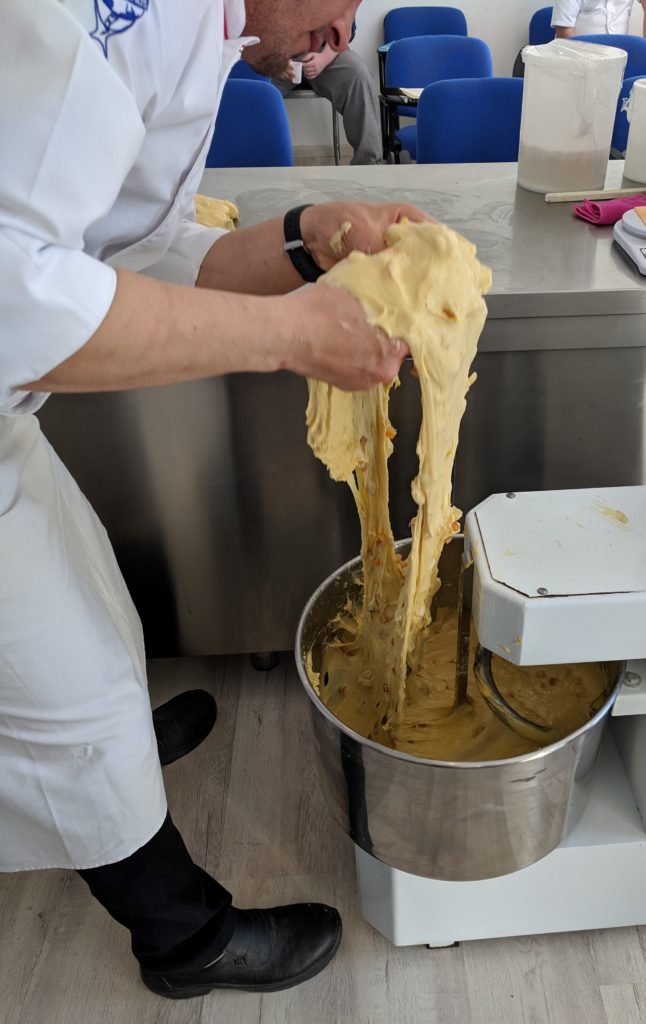
After Maestro Caridi finished his two days, we had a crazy day in the Pastry Kitchen with Chef John and Chef Juan doing a tag team performance…er, demonstration. They were simultaneously preparing dishes with instructions being shouted out between them like a yodel bouncing back from a facing hillside.
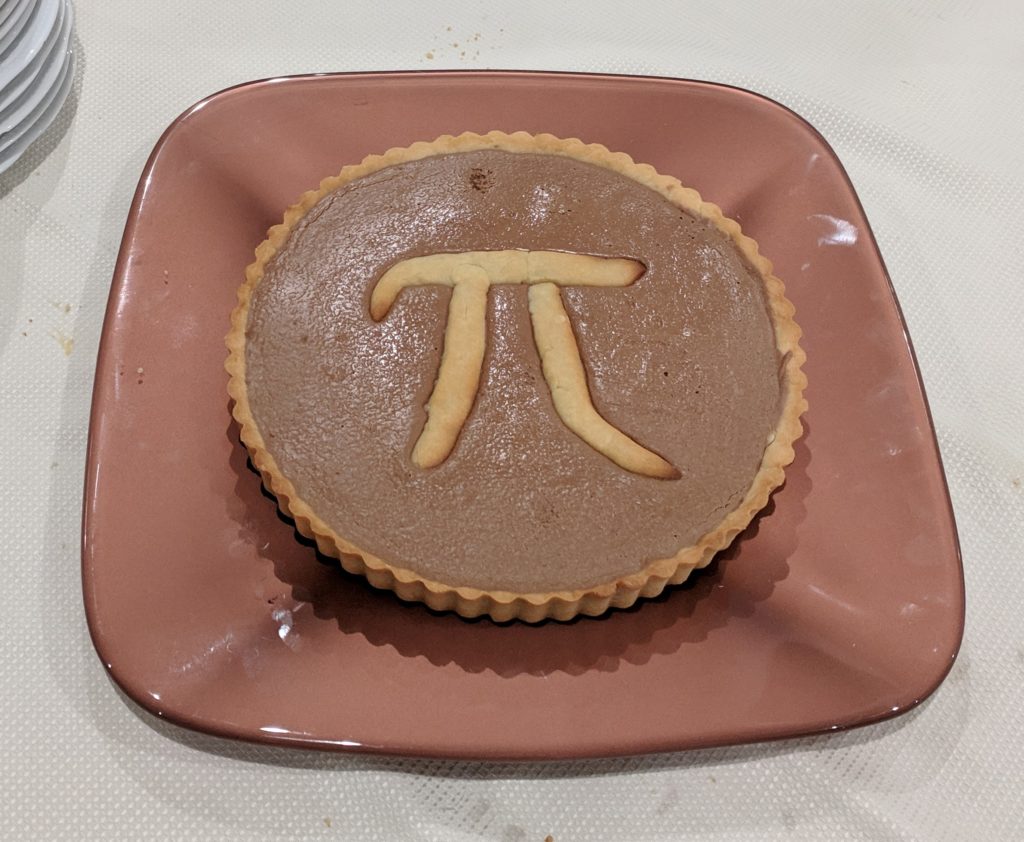
It was almost impossible to keep my notes straight but after weeks of practice with Chef John cooking multiple dishes as the same time, with me flipping back and forth between pages to get the instructions associated with the correct recipe, I just had to adjust my technique to directions being shouted out almost simultaneously for two different recipes from two different chefs. Also, since Chef John hates down time, he would start yet another recipe while waiting for the previous one. I often had three or four recipes being recorded at the same time.
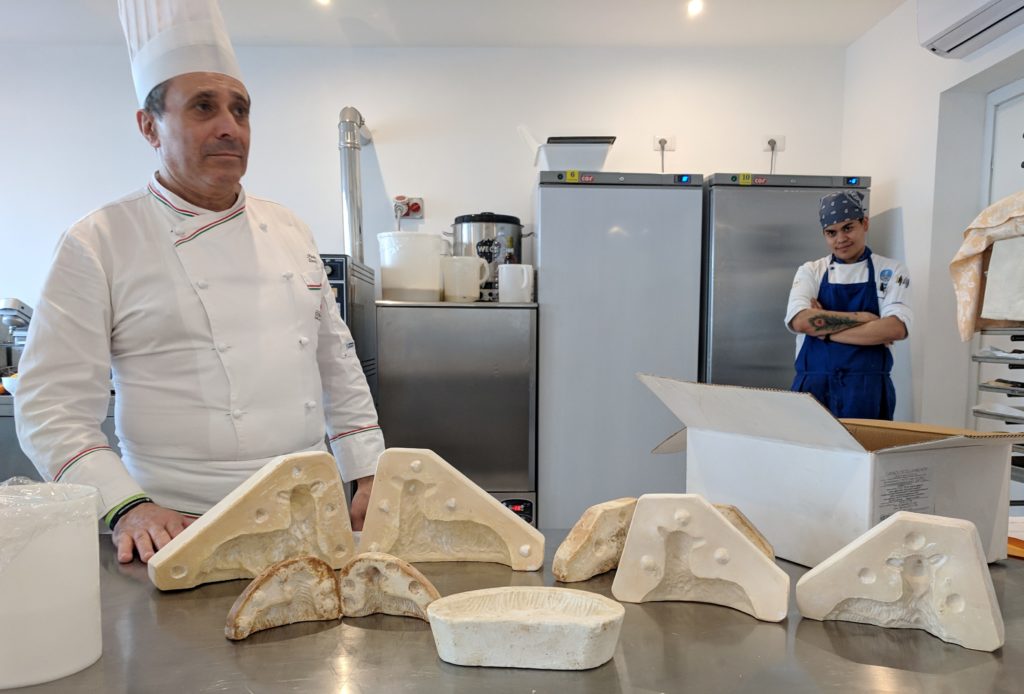
That day we got experience with:
- Pasta Sfoglia (puff pastry)
- Italian meringue
- Italian buttercream in two flavors, one vanilla and one hazelnut
- Pizzette (tiny pizza to be served as a snack)
- A brownie-like creation with abundant nuts but no flour
- Cornetti, the Italian version of croissants but definitely different
- Pasta Frolla, a short crust pastry for tarts
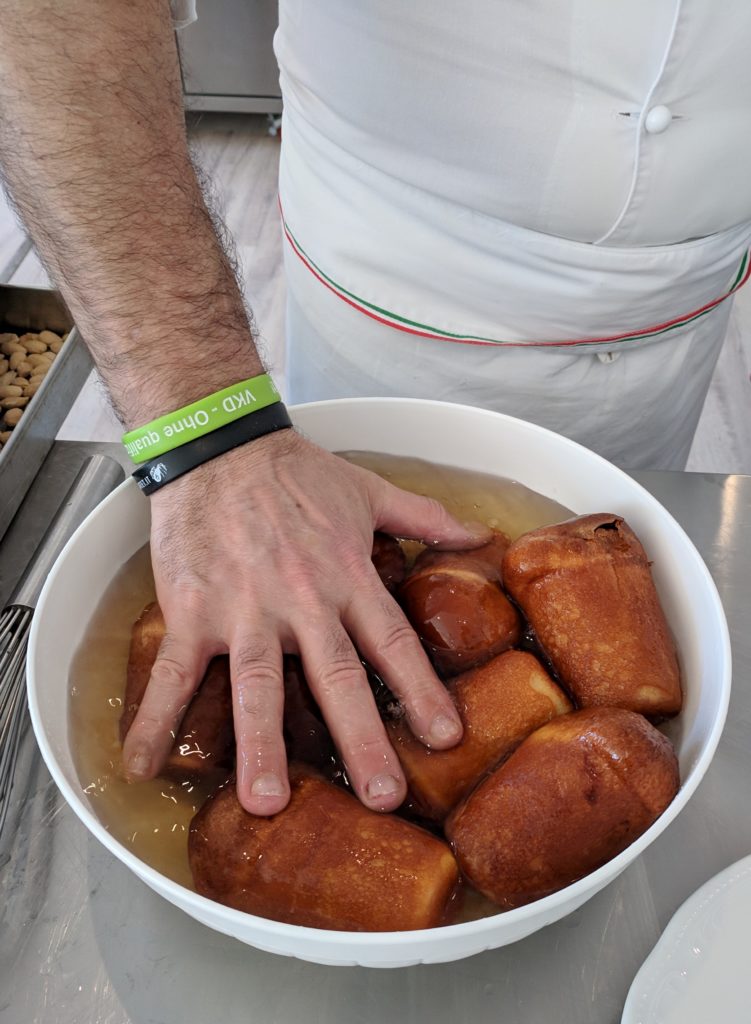
Friday morning was a market day, as usual. The weekly open-air market in Soverato has really been picking up over the past few weeks: more vendors, a larger array of produce, more customers. I will definitely miss the array of foods available once I get home. I’m even enjoying the chaos of the market. Though I don’t speak much Italian, and I can’t understand a word of the local dialect, I know enough to make a purchase and occasionally trade a sentence or two back and forth with a vendor.

Friday afternoon there were a few demonstrations back at school: Frollini (a sweet pastry that can be baked on its own or filled), Chocolate Mousse, Chocolate Ganache and a range of Monoportion Cakes (basically, in this instance, thin sponge cakes cut into shapes and layered with buttercream and covered with glaze (or not).
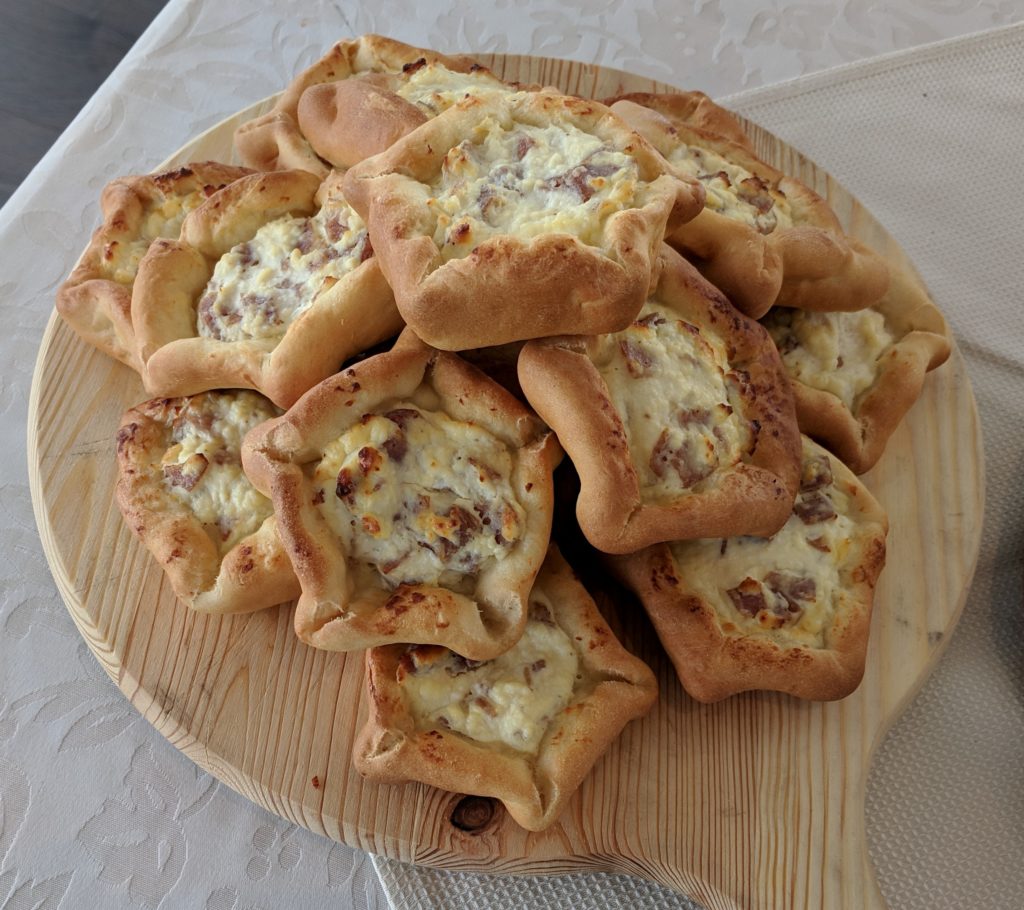
Afterwards, we each had to make a batch of pasta sfoglia (puff pastry). I don’t imagine that I’m likely to make it again but I felt like I did a credible job, never having done it before. The first step is rolling butter into a perfect square, which I did by placing it on parchment paper then folding the edges of the paper over to make a square. It was then pretty easy to roll the butter to the folded edges creating a perfect square.
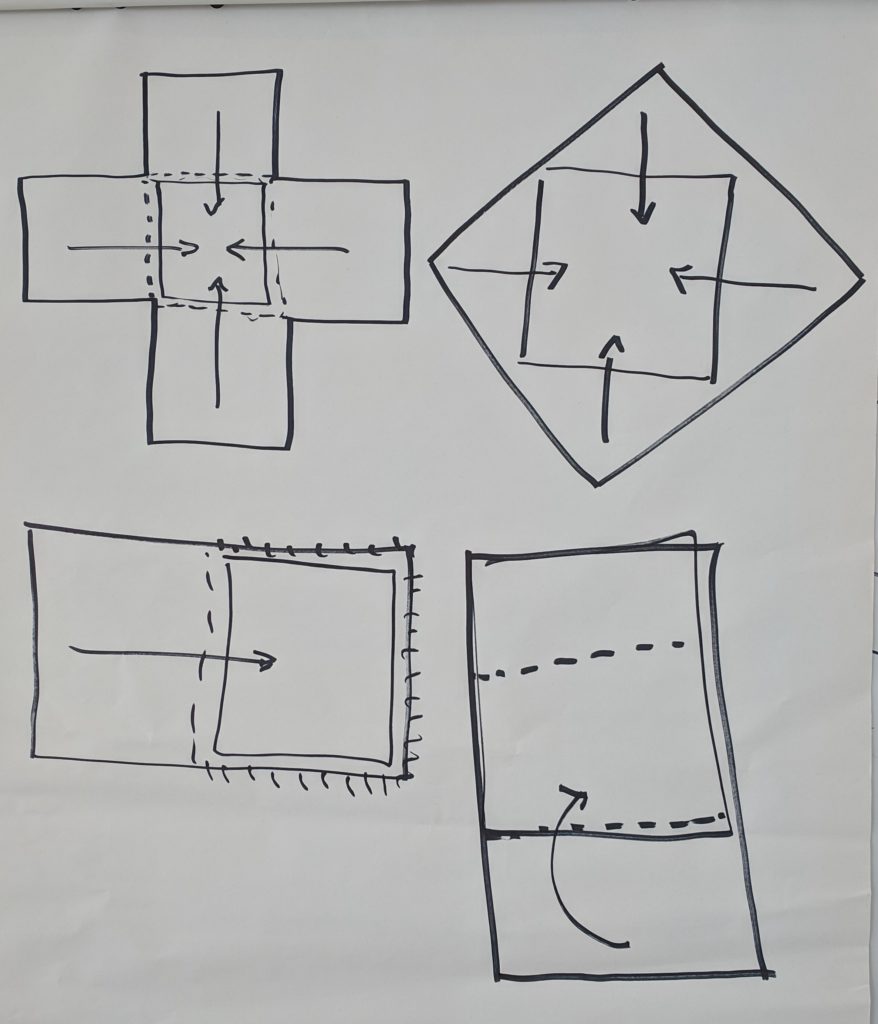
The butter went into the refrigerator while I rolled out the dough into a much larger square. The sides of the square of dough had to be the length of the butter measured from corner to corner so that when the butter was put on the dough rotated 45 degrees, the four corners of dough could be folded over encasing the butter but not overlapping.
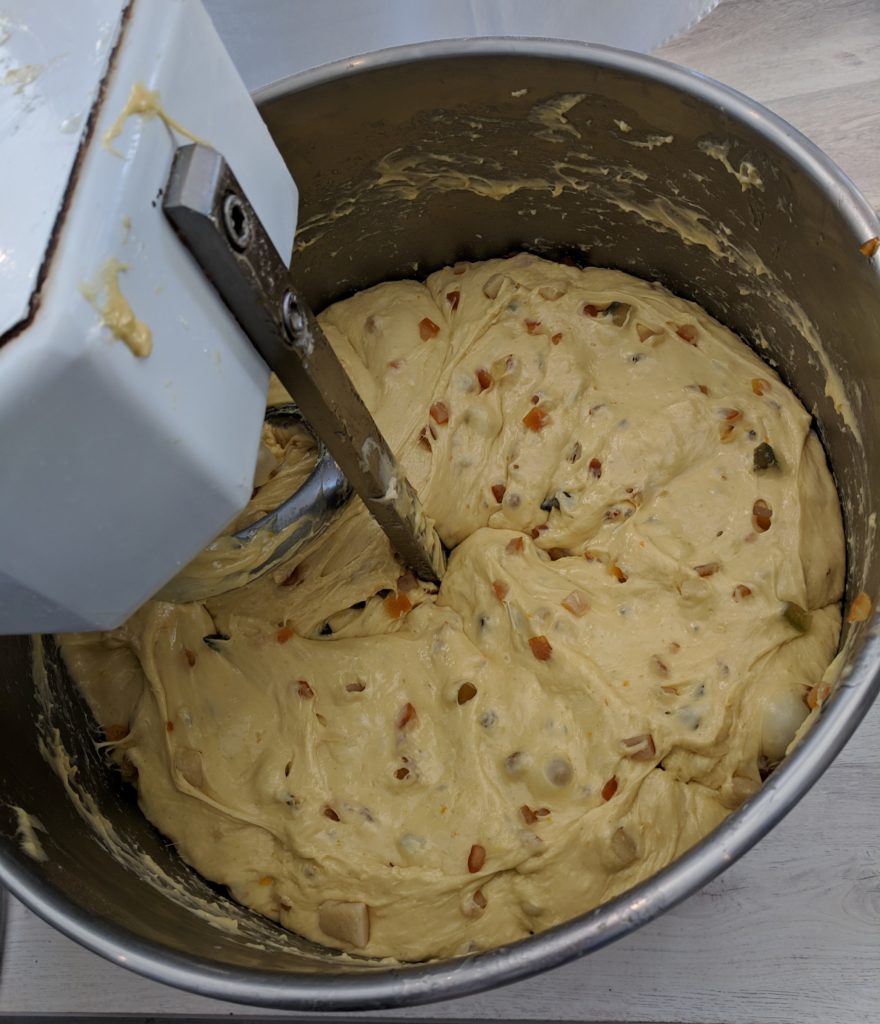
It’s then a matter of putting the butter on the dough, folding the dough over the butter then going through a series of successive folds of the whole thing, rolling and chilling between each, to achieve a block of pastry with 576 different layers after four successive folds. With one more fold, you’d end up with 2304 layers but by then there is a real risk of having each layer be so thin that the butter leaks out.

There were no further plans to use the pasta sfoglia. We were to just have the experience of making it. It all got put in the freezer while we took a one-day break. However, the pastry came in very handy during the menu execution that started the day after Pastry Week ended after Chef John made a last minute “suggestion” to improve one of our dishes.
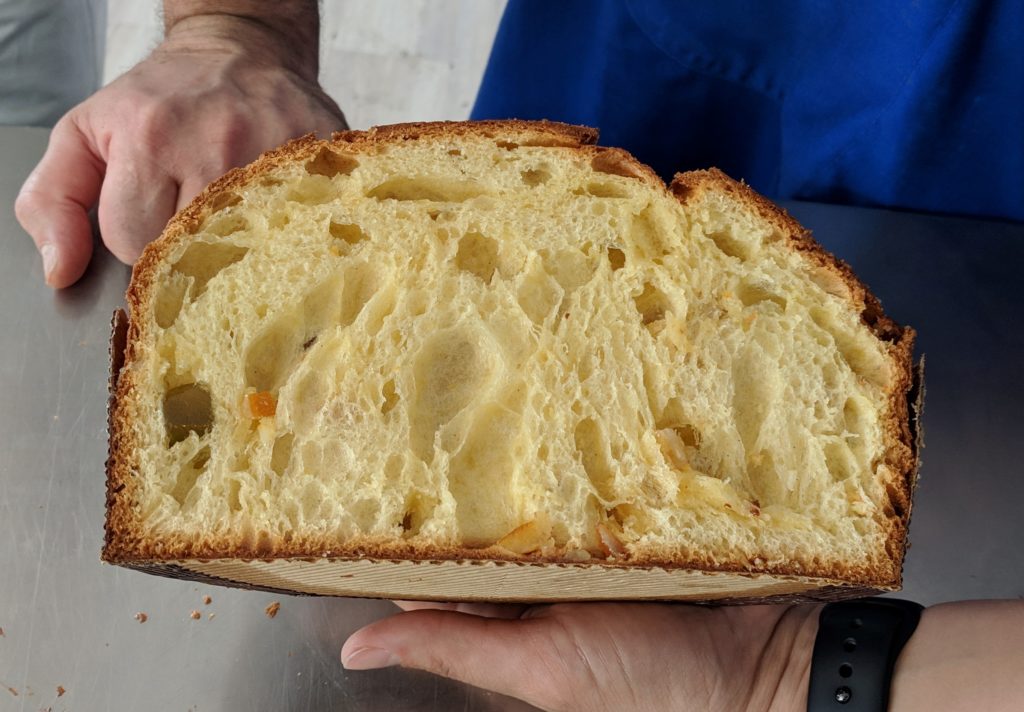
Stay tuned…

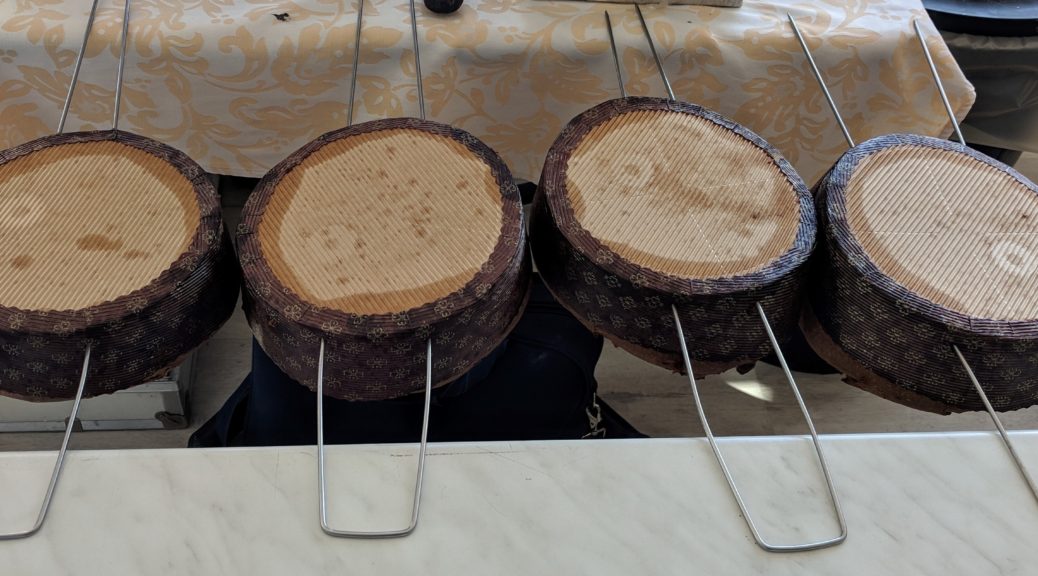
Completely fascinating!
It was a pretty amazing week. I’m anxious to try a lot of the items at home.
Yikes…do you weight 200 lbs. yet??
When do you return to Santa Fe?
I get home late on April 14th. I’ve gained about 8-10 pounds by my estimation. I have avoided looking for a bathroom scale.
OMG…I am salivating, curious, exhausted, excited and can’t wait for you to get home! I’m sure a book deal has to be waiting!!
I’m looking forward to coming home and cooking lots of new stuff to integrate the information. You may end up gaining weight. About the book deal…if only!!!